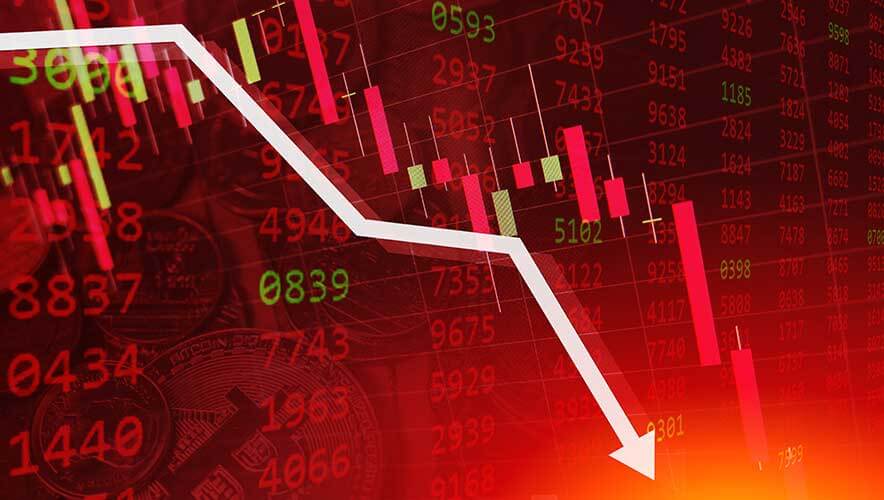UN Issues Somber Economic Forecast, Citing Geopolitical and Environmental Volatility
The United Nations projects that global economic growth will slow to 2.4 percent this year from an estimated 2.7 percent in 2023. This exceeds expectations, but it’s still below the 3 percent growth the global economy showed before the COVID-19 pandemic, the Associated Press reported.
This forecast is a bit lower than those from the International Monetary Fund or the Organization for Economic Cooperation and Development, but the UN cites a variety of challenges in its projection, including escalating conflicts, sluggish trade, persistently high interest rates, and climate disasters.
“The world economy proved more resilient than expected in 2023 amid significant monetary tightening and lingering policy uncertainties worldwide, even as multiple shocks arising from conflict and climate change wrought havoc on the lives and livelihoods of millions, further jeopardizing progress towards sustainable development,” according to the report’s executive summary. “Several large developed economies showed remarkable resilience, with robust labour markets supporting consumer spending despite sharp monetary tightening. At the same time, inflation gradually declined in most regions on the back of lower energy and food prices, allowing central banks to slow or pause interest rate hikes.
“This veneer of resilience, however, masks both short-term risks and structural vulnerabilities,” the report continued. “Underlying price pressures are still elevated in many countries. A further escalation of conflicts in the Middle East poses the risk of disrupting energy markets and renewing inflationary pressures worldwide. As the global economy braces for the lagged effect of sharp interest rate increases, the major developed country central banks have signalled their intention to keep interest rates higher for longer. The prospects of a prolonged period of higher borrowing costs and tighter credit conditions present strong headwinds for a world economy that is saddled with high levels of debt but also in need of increased investment, not only to resuscitate growth but also to fight climate change and accelerate progress towards the Sustainable Development Goals (SDGs). Moreover, tight financial conditions, coupled with a growing risk of geopolitical fragmentation, pose increasing risks to global trade and industrial production.”
The United States is likely to be particularly hit by the reduced growth; the UN expects a GDP growth drop from 2.5 percent in 2023 to 1.4 percent in 2024, driven by weaker consumer spending. China is likely to experience a moderate slowdown, too, with 4.7 percent growth compared to 5.3 percent in 2023.
These lower rates are affected by a number of factors, including:
Labor market. Post-pandemic, most developed countries experienced a robust recovery with low unemployment rates, but losses in income and labor shortages are posing challenges. In developing countries, though, issues like informal employment, gender gaps, and high youth unemployment persist. In addition, the advent of artificial intelligence is feared to exacerbate income inequalities by reducing demand for low-skilled jobs, with would disproportionately impact women and lower-income countries, the UN said.
Inflation. Global inflation fell from 8.1 percent in 2022 to 5.7 percent in 2023, and the decline is projected to continue this year. But food prices remain a critical issue. According to the UN, around 238 million people experienced acute food insecurity in 2023, with the cost of food serving as a significant driver of insecurity.
Investment. There has been a notable slowdown in investment growth in developed and developing economies. “However, while developed countries have continued to channel investments into sustainable and technology-driven sectors like green energy and digital infrastructure, developing countries face challenges such as capital flight and reduced foreign direct investment,” the UN noted. “Geopolitical tensions further influence these trends, affecting investment flows regionally.”
Trade. Global trade growth weakened to 0.6 percent in 2023, but it is expected to recover to 2.4 percent in 2024. The UN report, World Economic Situation and Prospects 2024, points to a shift in consumer spending, rerouting from goods to services, plus geopolitical tensions, supply chain disruptions, and the lingering effects of the COVID-19 pandemic as factors impacting trade.
International finance and debt. Debt sustainability is a critical challenge for developing countries, especially as global interest rates rise. There is also a decline in official development assistance and foreign direct investment for low-income countries.
Climate change. 2023 brought the hottest summer on record since 1880, and wildfires, floods, and droughts affected communities worldwide.
According to the UN, “Studies have predicted substantial losses to the global economy due to climate change. For instance, some estimates suggest a potential reduction of about 10 percent in global GDP by 2100, considering events like the collapse of the Greenland ice shelf. Other models indicate that without mitigation of global warming, average global incomes could be 23 percent lower by 2100. The IPCC [Intergovernmental Panel on Climate Change] estimates that global GDP losses could range between 10 and 23 percent by 2100 due to temperature impacts alone.”
For more about how security practitioners can help their organizations navigate a period of economic and geopolitical volatility, see SM’s coverage of new research from last week: “Increasing Risk Appetites Put Security Front and Center as an Influencer.”
New @ClarityFactory research found that 57 percent of board directors expect to increase risk appetites due to rising volatility and uncertainty. This presents a chance for security leaders to contribute essential data and serve as a trusted advisor. https://t.co/aTmptieEdO
— Security Management (@SecMgmtMag) January 2, 2024











